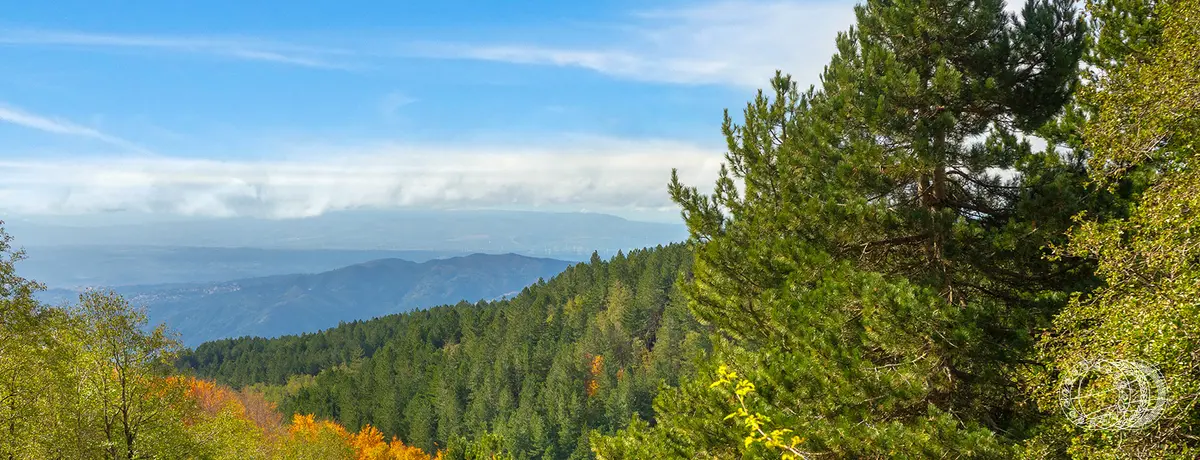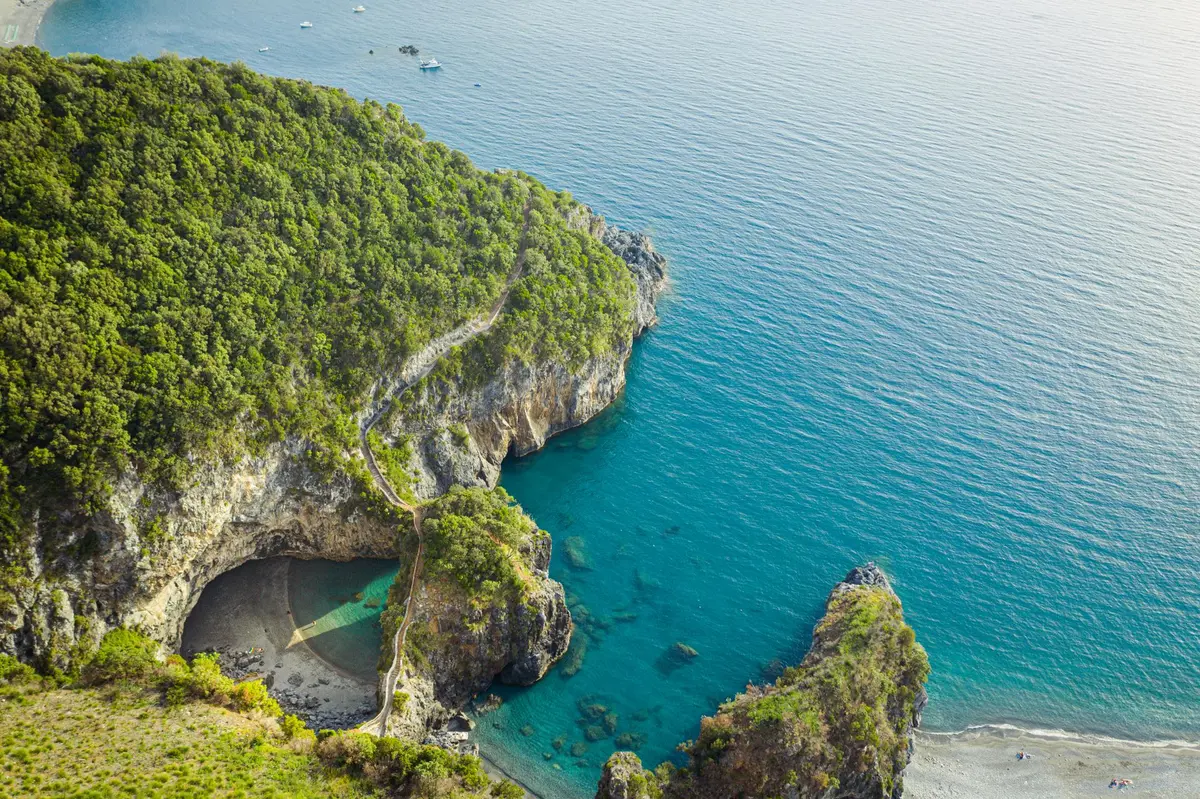1. Valli Cupe Canyon Trail
This path leading to the Valli Cupe Canyon starts from the Sersale-Raga municipal road and is also known as the path of the monasteries, because it led to the four Basilian monasteries in the area. Once the car is parked, the path starts descending towards the canyon, for a length of just over one kilometre.
Once at the bottom, you can enjoy the view of this very suggestive place, which has no equal in Italy in terms of its morphological characteristics. Rich in plant species, it is made up of vertically cut walls, with niches carved out by atmospheric agents that have become a nest for the numerous species of birds that inhabit this area (kestrels, buzzards, kites, imperial ravens, owls).
Visitors will be left speechless as they admire the play of light provided by the spaces, some of which are only a few metres wide and more than a hundred metres deep.
2. Petra Aggìallu Monolithic Trail
The route starts in Sersale and runs along the Rione Colla-Tre Fontane municipal road and the Molino Parisi municipal road to the Petra Aggìallu monolith (bird stone): about 18 metres high, it is so called because its profile resembles the head of a bird.
Several legends are told about this imposing granite monolith: one says that a treasure is kept underneath the building in a terracotta vase; another, instead, that around the monolith it is possible to meet a hen with golden babies.
3. Misorbo Monolith Trail and Laurel Falls
The path is about 1,400 metres long and leads to the 18-metre-high Misorbo monolith, which is made up of two different blocks of granite placed one on top of the other. The larger part, the lower one, resembles a man's profile, while the upper one is flat, shaped; the presence of steps suggests that the cave carved into the body of the monolith until recently served as a shelter for shepherds and woodcutters.
4. Hell's Path (waterfall and canyon)
5. Rupe Waterfall Trail
The path leads to the highest waterfall in the Campanaro torrent, with two jumps of 57 metres in total, and its clear waters are an excellent example of a natural swimming pool in which to find refreshment and rest after a long walk, with the possibility of admiring the natural forms assumed by the rocks thanks to the continuous flow of water.
Continuing along the path of the stream, you will then come across the Salice waterfall, in correspondence with an ancient white willow tree.
6. Water trail and Campanaro waterfall
This short and easy path usually arouses the wonder of visitors who find themselves in the presence of so much natural and unspoilt beauty.
Springs, small ponds, a pagliaro (a traditional shepherd's, farmer's and woodcutter's hut), a masonry bridge and wooden bridges across the stream are some of the wonders to be found on the path, some of which is carved directly into the rock, before reaching the 22-metre-high waterfall.
The flora is also very rich, with red algae on the sides of the stream bed, ferns, willows and manna trees, to name but a few species.
7. Crocchio Gorge and Waterfall Trail
The tourist trail is suitable for everyone and easy to follow. It is about 500 metres long and leads to the deep Crocchio Gorge, a river that here creates spectacular waterfalls and waterfalls interspersed with pools where you can bathe.
Along the banks there are alders, willows, laurels and the very rare royal fern.
8. Good Giant Trail
Along this approximately 800-metre-long tourist trail, you will come across the so-called Gigante Buono, a 500-year-old chestnut tree with a diameter of around 8 metres.
It is not only a reference to its imposing size that this woodland dweller takes its name from, but also a thank you for having fed generations of mountain dwellers: it is also called the bread tree because of the extensive use of chestnut flour in times of limited grain availability.
9. Giant Silane Olive Trail
A kilometre-long trek dedicated to hikers leads to the presence of the Sila Giant olive trees, a centuries-old laricio pine 35 metres high and 2 metres wide, which stands out against a slope of olive trees.
10. Giants of Cavallopoli Trail
The name Giganti di Cavallopoli (Giants of Cavallopoli) is given to the chestnut trees of considerable size, located along this path, near a small waterfall surrounded by blocks of granite and mosses: among them, the so-called Gigante Malandrino (Giant Malanderer) stands out, so called because it produces few chestnuts compared to its size.





